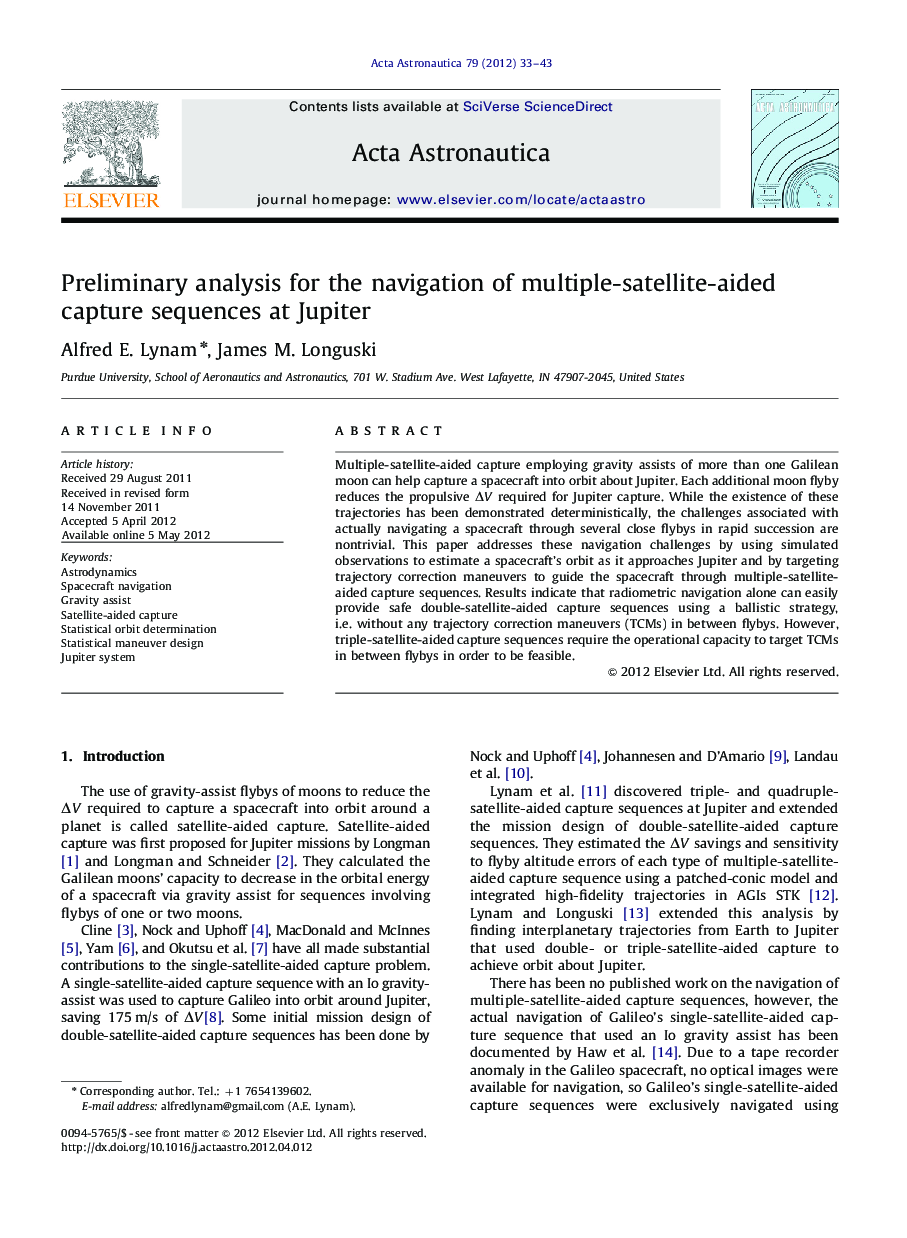| Article ID | Journal | Published Year | Pages | File Type |
|---|---|---|---|---|
| 1715294 | Acta Astronautica | 2012 | 11 Pages |
Multiple-satellite-aided capture employing gravity assists of more than one Galilean moon can help capture a spacecraft into orbit about Jupiter. Each additional moon flyby reduces the propulsive ΔVΔV required for Jupiter capture. While the existence of these trajectories has been demonstrated deterministically, the challenges associated with actually navigating a spacecraft through several close flybys in rapid succession are nontrivial. This paper addresses these navigation challenges by using simulated observations to estimate a spacecraft's orbit as it approaches Jupiter and by targeting trajectory correction maneuvers to guide the spacecraft through multiple-satellite-aided capture sequences. Results indicate that radiometric navigation alone can easily provide safe double-satellite-aided capture sequences using a ballistic strategy, i.e. without any trajectory correction maneuvers (TCMs) in between flybys. However, triple-satellite-aided capture sequences require the operational capacity to target TCMs in between flybys in order to be feasible.
► Multiple-satellite-aided capture can reduce ΔvΔv costs for Jupiter missions. ► Double-satellite-aided capture can be easily navigated with current technology. ► Triple-satellite-aided capture may require autonomous navigation capabilities.
